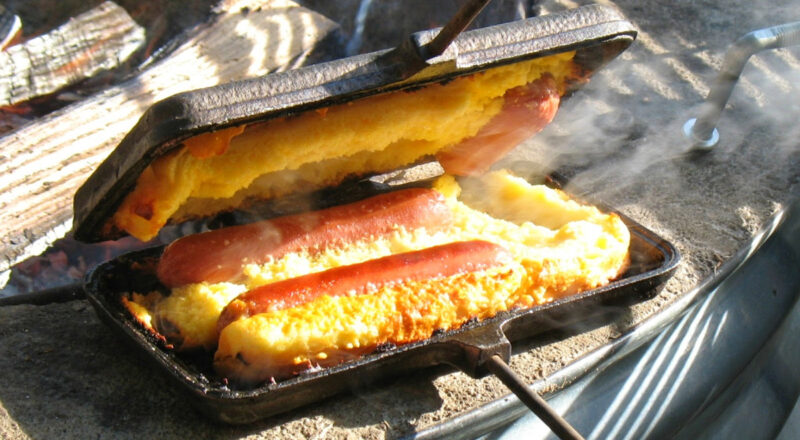If you’re passionate about outdoor cooking, a pie iron is an essential tool. Ensuring it remains in excellent condition means your camping and tripod grill adventures will be even more delightful. In this guide, we delve into key pie iron maintenance tips to lengthen its lifespan. From seasoned campers to novices, these tips will help you keep your pie iron looking and working its best.

Understanding the Importance of Maintenance
Proper maintenance of your pie iron is crucial for several reasons. Not only does it enhance cooking performance, but it also ensures safety and longevity. If neglected, pie irons can quickly rust and deteriorate, reducing their effectiveness and potentially affecting the flavor of your food.
Seasoning Your Pie Iron
Seasoning a pie iron is akin to the vital process of seasoning a cast-iron skillet. This process comprises applying a thin layer of oil and heating it to create a non-stick surface, making cooking and cleaning much easier.
To season your pie iron: – Wash with mild soap and water to remove the protective wax coating. – Dry thoroughly before the next step. – Apply a thin layer of vegetable oil all over the iron. – Heat gently over an open flame or in the oven to create a non-stick layer.
Regular Cleaning Practices
Keeping your pie iron clean is critical. A thorough cleaning helps prevent rust and maintains the integrity of the iron’s surface. After each use: – Avoid using abrasive materials to clean. – Clean with hot water and a soft brush as soon as it cools down. – Dry immediately with a towel.
Preventing Rust Formation
Rust can be a significant issue if the pie iron isn’t cared for properly. To prevent rust: – Always store in a dry place. – Re-season if water or moisture has been in contact.
Storage Solutions
Proper storage of your pie iron significantly impacts its longevity. It’s vital to keep it in an environment that does not encourage moisture build-up or physical damage. – Store in a dry place, perhaps wrapped in paper to absorb moisture. – Use a dedicated bag or case for added protection against dents or scratches.
Using the Right Tools
Being mindful of what tools you use with your pie iron can save you from scratches and other damage. Use only silicone or wooden utensils and avoid metal, which can scratch the surface and remove the seasoning.
Routine Inspections Before Each Use
Before each campfire session, it’s wise to inspect your pie iron. Check for signs of wear, rust, or cracked metal. Addressing minor issues promptly can prevent more severe problems later.
Travel Tips for Pie Iron Care
Traveling with a pie iron adds challenges in keeping it in top shape. Ensure: – It’s secured during transit to avoid physical damage. – It stays dry during transport.
Troubleshooting Common Issues
Even with meticulous care, issues may arise. Common problems include sticking, rusting, or poor cooking performance. Address sticking by re-seasoning. If rusting occurs, scrub the rust off gently and reapply a seasoning layer. For poor cooking performance, ensure the pie iron isn’t overheating or cooled down when adding ingredients. Learn more about effective pie iron cooking.
Enhancing Pie Iron Skills
Master your pie iron use by experimenting with various recipes, like the ones shared by the experts at Fresh Off The Grid. Mastery comes with practice, attentive maintenance, and creativity in your outdoor kitchen.

Conclusion: Achieving Long-Lasting Performance
Incorporating these pie iron maintenance tips will significantly extend the life and performance of your pie iron. Remember, a well-maintained tool is an integral part of memorable outdoor cooking experiences.
FAQs
Q1: How often should I season my pie iron?
A: Seasoning should be done initially and then as needed. For frequent users, re-seasoning after every 3-4 uses is advisable.
Q2: Can I use soap to clean my pie iron?
A: It’s best to avoid soap as it can strip the seasoning. Use hot water and a brush instead.
Q3: Why is my food sticking?
A: If sticking occurs, it may be due to insufficient seasoning. Re-apply a thin layer of oil and heat to restore its non-stick properties.
This article contains affiliate links. We may earn a commission at no extra cost to you.

